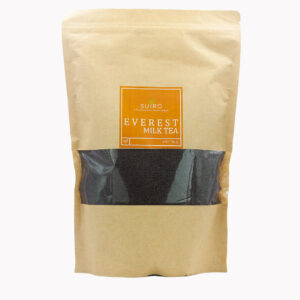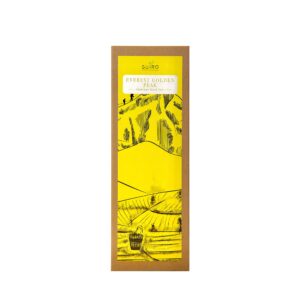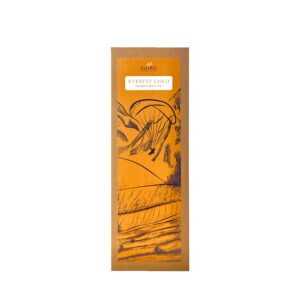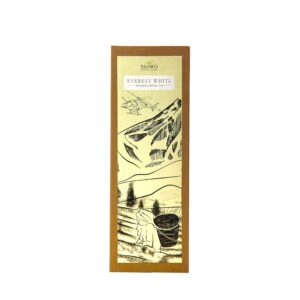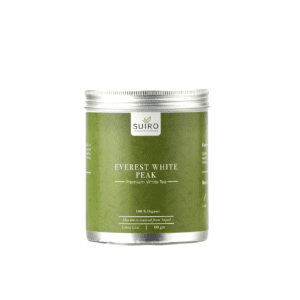Your cart is currently empty!
Pure teas refer to teas that are made solely from the leaves of the Camellia sinensis plant, without the addition of any other ingredients or flavorings. The Camellia sinensis plant is native to East Asia and is used to produce various types of teas, including black tea, green tea, white tea, oolong tea, and pu-erh tea.
Golden Tea
Dianhong tea is a type of black tea that is produced in the Yunnan province of China. It is one of the most famous and well-regarded black teas in the world. Using the similar traditional techniques and high quality young tea buds and young leaves from spring and autumn flush teas are processed and produced in high altitude regions of Eastern Nepal and these tea are named as Golden tea. The tea is made from the leaves of the Camellia sinensis plant. The tea leaves are typically plucked, withered, rolled, oxidized, and then dried. Golden tea is known for its high-quality processing techniques, resulting in a distinctive flavor and appearance.
Golden tips, which give the tea a beautiful golden and amber color when brewed ,though the brew color and taste can vary it is typically known to produce a brew that is brassy golden orange in color with a sweet, gentle aroma .The leaves are usually long, slender, and twisted with a unique flavor profile, It offers a smooth and malty taste with notes of honey, caramel, and sometimes chocolate. The tea has a rich and full-bodied flavor that is often described as robust and sweet.
In Suiro we have two varieties of Golden Tea , Everest Gold Peak and Everest Gold . Everest Gold Peak is made exclusively from the unopened buds, while Everest Gold includes buds and leaves. Like other black teas, Golden Tea contains caffeine. However, the exact amount can vary depending on factors such as the brewing time and the amount of tea leaves used. To brew Golden Tea, it is typically recommended to use water that is around 195-205°F (90-96°C). The brewing time can vary depending on personal preference, but it is generally recommended to steep Golden tea for 3-5 minutes. Adjustments can be made based on taste preferences. Golden tea is highly regarded by tea enthusiasts for its exceptional quality and taste.
White Tea
White tea is harvested before the tea leaves fully open, typically in early spring. The young buds and leaves are covered in fine white hairs, which give the tea its name. White tea undergoes minimal processing compared to other types of tea. After plucking, the leaves are usually withered and dried, either naturally or with the help of gentle heat, to prevent oxidation. This minimal processing allows the tea to retain its delicate flavor and natural characteristics.
In suiro we have two varieties of white tea, Everest white peak and Everest white. Everest white peak is made exclusively from the unopened buds, while Everest white includes buds and leaves. White tea is characterized by its light color and appearance. The dried leaves often have a silvery or grayish-white hue. When brewed, white tea produces a pale yellow or amber liquor. White tea offers a subtle and nuanced flavor profile. It is known for its mild, delicate taste with notes of sweetness, floral hints, and sometimes a subtle grassy or honey-like aroma. The flavor can vary depending on the specific variety and growing region. Like other types of tea, white tea contains antioxidants and various beneficial compounds. It is often associated with potential health benefits such as supporting immune health, promoting skin health, and providing antioxidant properties.
However, scientific research is ongoing to further explore these potential health benefits. White tea generally has a lower caffeine content compared to black or green tea. However, the exact caffeine levels can vary depending on factors such as the specific tea variety, growing conditions, and brewing methods. White tea is typically brewed with water at lower temperatures (around 175°F or 80°C) to avoid scorching the delicate leaves. The brewing time is relatively short, usually around 2-3 minutes, although this can be adjusted based on personal preference. White tea is cherished for its gentle flavor, natural sweetness, and unique characteristics. Its subtlety and delicate nature make it a favorite among tea enthusiasts who appreciate its nuanced taste and the art of its minimal processing.
Oolong Tea
Oolong tea is a traditional type of tea that falls between green tea and black tea in terms of oxidation levels and flavor profiles. It originated in China and has gained popularity worldwide for its unique characteristics. Oolong tea undergoes partial oxidation, where the tea leaves are intentionally bruised and exposed to air to initiate oxidation. The oxidation process can vary, typically ranging from 10% to 70%, depending on the desired flavor profile. This partial oxidation gives oolong tea its distinct taste and aroma. Oolong tea leaves can vary in appearance, depending on the specific variety and processing methods. They can be twisted, curled, or rolled into tight balls. The color of the leaves can range from green to dark brown, depending on the degree of oxidation. Oolong tea offers a wide range of flavors and aromas, which can vary depending on factors such as the tea cultivar, growing region, and processing techniques. Oolong teas can have floral, fruity, toasty, or even creamy notes. The flavor profile can be complex and layered, with a balance of sweetness, bitterness, and a lingering aftertaste.
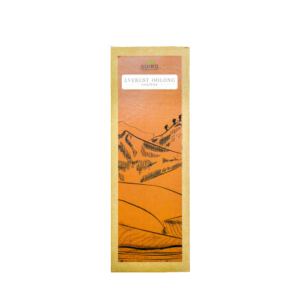
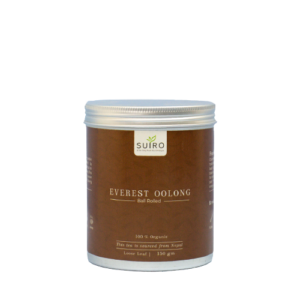
The caffeine content of oolong tea falls between that of green tea and black tea. It typically contains less caffeine than black tea but more than green tea. However, the exact caffeine levels can vary depending on factors such as the specific tea variety, brewing methods, and steeping time. Oolong tea is best brewed with water at temperatures ranging from 180°F to 200°F (82°C to 93°C). The brewing time can vary depending on the type of oolong tea, but it is generally recommended to steep oolong tea for 1 to 5 minutes. Multiple infusions can be made from the same tea leaves, with each infusion offering different flavor profiles. Oolong tea is cherished by tea enthusiasts for its complex flavors, unique aromas, and the craftsmanship involved in its production. The wide variety of oolong teas available provides an opportunity to explore different flavors and experiences, making it a fascinating category of tea for tea connoisseurs and those looking to discover new tastes. In Suiro we have two types of oolong tea one curled milder oolong and a much bold rolled ball oolong.
Green Tea
Green tea is a type of tea that undergoes minimal oxidation during processing, allowing the tea leaves to retain their natural green color. It is known for its fresh and grassy flavor, delicate aroma, and numerous health benefits. Green tea is produced by steaming or pan-firing freshly harvested tea leaves to halt the oxidation process. This minimal processing helps preserve the natural compounds and flavors present in the leaves. Unlike black or oolong tea, green tea retains its green color and has a lighter taste. Green tea has a fresh, vegetal, and sometimes slightly nutty flavor. Depending on the specific variety, it can have notes of grass, seaweed, or even floral undertones. The aroma of green tea is often described as grassy or vegetal. Green tea generally contains less caffeine than black tea but more caffeine than white tea. The exact caffeine levels can vary depending on factors such as the type of green tea, brewing methods, and steeping time. However, compared to coffee, the caffeine content of green tea is relatively lower.
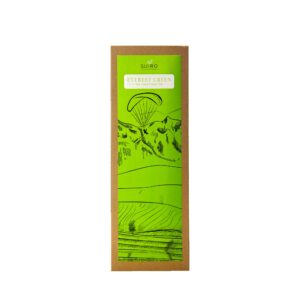
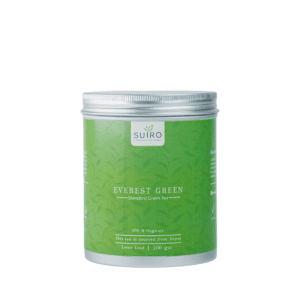
Green tea is often associated with various health benefits due to its rich antioxidant content. It contains compounds called catechins, which are believed to have potential antioxidant and anti-inflammatory properties. Green tea is also known to support metabolism, heart health, and brain function. However, it’s important to note that individual results may vary, and further research is needed to fully understand the extent of these health benefits. Green tea is typically brewed with water at temperatures ranging from 160°F to 180°F (70°C to 82°C). Steeping times vary depending on the specific tea variety, but they usually range from 1 to 3 minutes. Over-steeping green tea can result in a bitter taste, so it’s important to follow the recommended brewing guidelines.
Black Tea
Black tea is a type of tea that is more oxidized than green, white, and oolong teas. It is also one of the most popular types of tea consumed worldwide. Black tea leaves are withered, rolled, and fully oxidized before being dried and processed. This process leads to the characteristic flavors and aromas of black tea. When brewed, black tea typically has a dark reddish-brown or amber color. Black tea contains various antioxidants and compounds that may offer potential health benefits. These may include improved heart health, enhanced mental alertness, and potential immune-boosting properties.
However, individual results may vary, and it’s important to consume it in moderation as part of a balanced diet.
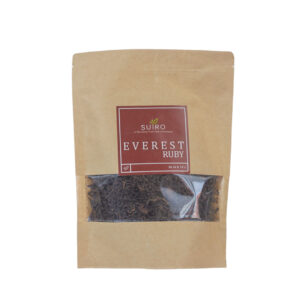
Cut Leaf Black Tea
Cut leaf black tea is made up of smaller tea leaf fragments. The leaves are broken or cut into smaller pieces during the processing phase, resulting in irregularly shaped particles. Cut leaf black tea brews more quickly due to the smaller size of the leaf fragments.
It generally requires a shorter steeping time, around 2-3 minutes, to achieve a desired flavor strength. Cut leaf black tea may produce a stronger and bolder infusion due to the increased surface area of the smaller leaf fragments. It can result in a robust and intense flavor, particularly when brewed for a shorter time.
CTC (crush,tear,curl)
The leaves are passed through CTC machines, which crush, tear, and curl the leaves into small pellets or granules. This method is used to enhance extraction during brewing and produce a strong and robust tea. CTC tea consists of small, uniform pellets or granules that are tightly rolled. The leaves are broken into tiny pieces during processing. CTC tea is known for its strong and bold flavor. It brews quickly and produces a deep, rich, and brisk cup of tea. It is often preferred for making chai or for those who enjoy a strong tea flavor. CTC tea brews much faster due to its small size and increased surface area. CTC tea is often used for making masala chai or milk tea, where it is boiled or simmered with milk, spices, and sweeteners to create a strong and flavorful brew.
